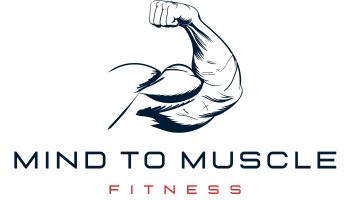
Muscle Confusion: Myth or Effective Training Strategy?
Have you ever wondered if constantly changing your workouts is the key to better results? The idea of muscle confusion has been a hot topic in the fitness world for years. But is it truly effective, or just a myth?
Many believe that switching up your exercise routine can “shock” your body into adapting faster. This strategy aims to keep your muscles guessing, preventing them from getting too comfortable with a specific workout. But does science back this up?
Research shows that our nervous and muscular systems play a big role in how we adapt to training. While variety can be beneficial, it’s not the only factor that matters. This article dives into the science behind muscle confusion and whether it’s a smart strategy for your fitness goals.
Let’s explore the facts, debunk the myths, and help you decide what works best for your body.
Understanding the Basics of Muscle Confusion
What exactly does it mean to keep your body guessing during workouts? The idea behind this approach is to prevent your system from adapting too quickly to a routine. By introducing variety, you aim to challenge your body in new ways.
What Is Muscle Confusion?
This strategy involves changing your workout regularly to avoid plateaus. It’s based on the belief that your body adapts faster when it can’t predict the next move. For example, switching between strength training and cardio can keep your system engaged.
How Our Nervous System Guides Movement
Your brain plays a key role in coordinating movement. Before you even start an exercise, your nervous system pre-activates the necessary muscles. This process ensures smooth and efficient motion, whether you’re lifting weights or picking up an object.
Proteins like PGC1α also contribute to this process. They help your body adapt to new challenges by improving energy production and muscle coordination. Research shows that consistent changes in your routine can enhance these adaptations over time.
For instance, a study found that participants who varied their workouts maintained higher motivation levels. While physical gains were similar to those following a consistent routine, the mental benefits were significant. This highlights the importance of balancing variety with consistency in your training.
Exploring the Science Behind Muscle Confusion
What does science say about changing your workout routine? Many fitness enthusiasts swear by the idea of switching exercises to keep their body guessing. But is there real evidence to back this up? Let’s dive into the research to find out.
Key Research Findings and Studies
Studies show that varying your workouts can have both physical and mental benefits. For example, a study from the University of the Basque Country found that participants who randomized their exercises experienced higher motivation levels. This suggests that variety can keep you engaged in your fitness journey.
Another key finding is the role of repetition and volume in building strength. Research indicates that increasing the number of sets or reps over time can lead to significant gains. However, switching exercises too often might not allow your body to fully adapt.
How the Brain and Muscles Interact
Your brain plays a crucial role in coordinating movement during exercise. When you perform a press or lift weights, your nervous system activates the necessary muscles. This process ensures smooth and efficient motion.
Proteins like PGC1α also help your body adapt to new challenges. They improve energy production and muscle coordination, making it easier to handle increased loads. Gradually increasing the intensity of your workouts can enhance these adaptations.
| Study Focus | Key Findings |
|---|---|
| Varied Exercises | Higher motivation levels and engagement |
| Repetition and Volume | Significant strength gains over time |
| Brain-Muscle Interaction | Improved coordination and energy production |
In summary, science supports the idea that workout variety can be beneficial. However, it’s essential to balance changes with consistency to maximize your results.
Implementing Muscle Confusion in Your Training Routine
Ready to shake up your fitness routine for better results? Adding variety to your workouts can keep things exciting and challenging. But it’s important to do it right to avoid losing progress. Let’s explore how to plan and integrate changes effectively.
Planning Your Workout Variations
Start by mapping out your routine for the next few weeks. Focus on including different exercises that target the same muscle groups. For example, switch between squats and lunges for leg workouts. This keeps your body engaged without sacrificing progress.
Stick with a set plan for at least 3-4 weeks before making significant changes. This gives your body enough time to adapt and show measurable results. Too many changes too soon can hinder your gains.
Gradual Integration for Steady Progress
Introduce new exercises or techniques gradually. For instance, add one new move each week instead of overhauling your entire routine. This approach ensures steady progress and prevents overwhelm.
Adjust your level of challenge based on how you feel. If an exercise becomes too easy, increase the weight or reps. This keeps your workouts effective and aligned with your goals.
- Set clear goals: Define what you want to achieve, whether it’s strength, endurance, or flexibility.
- Track your progress: Keep a journal or use an app to monitor your improvements over time.
- Stay consistent: Balance variety with consistency to maximize your results.
By following these strategies, you can keep your workouts fresh and effective. Remember, the key is to balance variety with steady progress for long-term success.
Muscle Confusion Versus Progressive Overload
When it comes to fitness, is it better to stick with what works or keep things unpredictable? This debate often centers around two strategies: muscle confusion and progressive overload. While both have their merits, understanding their differences can help you choose the best way to reach your goals.
Benefits of Consistent Overload
Progressive overload focuses on gradually increasing the weight, reps, or intensity of your workouts. This method allows your body to adapt steadily, leading to long-term improvements in health and strength. For example, adding 5 pounds to your deadlift every week ensures continuous progress.
Fitness trainers often recommend this approach because it builds a solid foundation. By sticking to a specific type of exercise, you can master the technique and see measurable results. Studies show that consistent training leads to better health outcomes and higher satisfaction rates.
Limitations of Constant Exercise Switching
On the other hand, constantly changing your routine can hinder progress. While variety keeps things interesting, it may not allow your body to fully adapt. For instance, practicing a deadlift only once a month means you’re not giving your muscles enough time to improve.
Fitness experts point out that frequent switching can lead to muscle imbalances. If you’re not consistent with a specific type of exercise, you might miss out on the neurological adaptations needed for strength gains. This is one reason why many trainers advocate for a structured plan.
- Clear goals: Define what you want to achieve, whether it’s strength, endurance, or flexibility.
- Track progress: Use a journal or app to monitor improvements over time.
- Balance variety: Introduce new exercises gradually while maintaining consistency.
In summary, while muscle confusion can add excitement to your workouts, progressive overload offers a more reliable way to achieve your fitness goals. By focusing on steady progress, you can build strength and improve your overall health.
Benefits and Limitations of the Muscle Confusion Approach
Is switching up your routine the secret to breaking through fitness plateaus? Many people believe that varying workouts keeps their body guessing, leading to better results. But like any strategy, it has its pros and cons. Let’s explore how this approach works and what it means for your progress.
Why Variety Can Be a Game-Changer
One of the biggest benefits of changing your routine is keeping things fresh. When you introduce new exercises, it can reignite your motivation. For example, swapping squats for lunges or adding a deadlift to your leg day can challenge your body in new ways.
Studies from leading university programs show that varied workouts can enhance both physical and mental engagement. Participants who randomized their exercises reported higher satisfaction levels. This suggests that variety can make your fitness journey more enjoyable.
How Your Body Adapts Over Time
Your body is designed to adapt to challenges. When you perform the same set of exercises repeatedly, your muscles and nervous system become more efficient. However, this can lead to plateaus if you don’t increase the load or intensity.
Gradual changes, like adding weight or reducing rest time, can help you continue making gains. For instance, a man who increases his deadlift weight by 5 pounds every week will see steady progress. This approach ensures your body keeps adapting without overwhelming it.
| Benefit | Limitation |
|---|---|
| Keeps workouts interesting | May hinder long-term progress |
| Boosts motivation | Requires careful planning |
| Prevents plateaus | Can lead to muscle imbalances |
In summary, the muscle confusion approach can be effective if used wisely. Balancing variety with consistency is key to achieving your fitness goals. By understanding your body’s adaptation process, you can make informed decisions about your routine.
My Personal Experience with Muscle Confusion
When I first heard about the idea of switching up workouts, I was intrigued but skeptical. I decided to give it a try to see if it could help me break through a plateau in my fitness journey. Over time, I learned some valuable lessons about what works and what doesn’t.

Lessons Learned from Experimenting
One thing I noticed early on was the importance of paying attention to my form and intensity. When I varied my exercises, I had to focus more on how my body was moving. This not only improved my technique but also boosted my endurance over time.
For example, I alternated between push-ups, bench presses, and dumbbell rows to target my upper body. This variety kept things interesting and challenged my muscles in different ways. The most important thing I learned was that consistency in frequency mattered more than constantly changing exercises.
I also experimented with the stimulus by adjusting weights, reps, and rest periods. Gradually increasing the intensity helped me see steady progress without overwhelming my body. One thing I’d caution against is changing too much too soon—it can make it hard to track improvements.
| Key Takeaway | Impact |
|---|---|
| Variety in exercises | Improved motivation and engagement |
| Consistent frequency | Steady progress and measurable results |
| Gradual stimulus changes | Enhanced strength and endurance |
In the end, my experience taught me that balance is key. While varying workouts can be beneficial, it’s essential to maintain a consistent frequency and focus on progressive overload. This approach helped me achieve my fitness goals without losing sight of the bigger picture.
Final Thoughts on Muscle Confusion Training
Finding the right balance in your workouts can make all the difference. Over the years, science has shown that variation in exercises can keep things fresh and engaging. However, consistency remains key to long-term progress.
Incorporating foundational moves like the squat into your routine ensures steady improvements. Adding exercise variation can challenge your body in new ways, but it’s important to avoid switching too often. A well-planned routine strikes the perfect balance.
Reflecting on science-backed practices, it’s clear that gradual changes yield the best results. Whether you’re focusing on strength or endurance, staying consistent with your workouts is essential. Experiment with variation, but don’t lose sight of your core exercises.
Take the time to evaluate what works best for you. Try new moves, but keep your squats and other base movements in the mix. Your fitness journey is unique—find the approach that keeps you motivated and moving forward.
FAQ
What is muscle confusion?
It’s a training strategy where you frequently change exercises, intensity, or routines to prevent your body from adapting. The goal is to keep your workouts challenging and avoid plateaus.
How does the nervous system guide movement during exercise?
Your nervous system controls how your body responds to movement. When you introduce new exercises, it forces your brain and muscles to adapt, improving coordination and strength over time.
What does research say about muscle confusion?
Studies show that varying your routine can enhance performance and prevent boredom. However, consistency with progressive overload is still key for long-term gains.
How can I integrate muscle confusion into my routine?
Start by swapping one or two exercises weekly. Gradually increase the variety to keep your body guessing while maintaining focus on your fitness goals.
Is muscle confusion better than progressive overload?
Not necessarily. Progressive overload builds strength steadily, while muscle confusion adds variety. Combining both can be effective for balanced progress.
What are the limitations of muscle confusion?
Constantly switching exercises can make it harder to track progress. It’s important to balance variety with consistency to see measurable results.
How does the body adapt to muscle confusion?
Your body adapts by improving its ability to handle new challenges. However, too much variation without a clear plan can slow down specific strength or endurance gains.
What have you learned from experimenting with muscle confusion?
I found that adding variety keeps workouts exciting and helps break plateaus. However, I also learned that sticking to a structured plan is crucial for long-term success.



